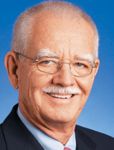Article
How to maximize your practice's pension plan
Author(s):
Without any thought or planning, the 401(k) has become America's default pension plan. But the 401(k) is deeply flawed and may not provide you with the retirement security you're expecting.

Key Points
Without any thought or planning, the 401(k) has become America's default pension plan. The days of guaranteed retirement income for life are long gone, and along with them, the financial security the traditional pension plan provided.

These failures include costs that bear no resemblance to the value provided, deeply embedded conflicts of interest, sustained underperformance of underlying investment vehicles, inadequate disclosure, inappropriate investment menus, defective plan design, insufficient participant education, and flawed default provisions.
The combined effect on participant accounts and retirement funding is devastating. Taken together, these defects all but guarantee the failure of 401(k) plans to provide meaningful retirement security to many Americans.
BETTER DISCLOSURE REQUIRED
Despite their shortcomings, 401(k) accounts remain the backbone of the American retirement system, and families that open and continue to fund 401(k) accounts have substantially higher net worth than those without such plans. It's critical, therefore, to improve this vital retirement funding component.
After years of study, thousands of hours of congressional testimony, hundreds of hearings, and innumerable public comments, the U.S. Department of Labor (DoL) issued its final 408(b)(2) and 404(a) regulations, designed to force better disclosure. The hope is that with this improved information, plan providers and participants will make decisions that improve retirement preparation for America's workers. It appears that they will become effective in the third quarter of this year.
Recently, the DoL released new rules regarding the Employee Retirement Income Security Act (ERISA) 408(b)(2), 404(a), and electronic delivery. Service provider regulations 408(b)(2) took effect July 1, and the new 404(a) participant disclosure rules become effective August 30, with the first quarterly statements under the rules for calendar-year plans due by November 14.
These regulations expand the definition of fiduciary investment advice, so that many consultants who were not previously fiduciaries now are considered fiduciaries. In addition, by mandating significantly higher levels of disclosure, the regulations make key, previously unavailable information available to investors.
The flurry of enacted and proposed "band-aid" fixes will go part of the way toward improving the retirement landscape. But regulations, legislation, and the threat of court action can go only so far. The various fixes provide information and guidance to plan fiduciaries but can't make the fiduciaries better by themselves. The plan sponsor must either develop fiduciary practices and procedures or delegate them to someone who can.
As a physician, you practice medicine and provide healthcare. Acting as a fiduciary and developing appropriate procedures and practices probably is outside your skill set and a distraction from your primary interest of practicing medicine.
I'm not suggesting for a moment that doctors don't care. Nobody wants to offer an inferior retirement plan to his or her employees. Most employers want their employees to receive maximum benefits for each dollar set aside. But wishing won't make it so. And leaving it to a bundled solution provider who "takes care of it all" may not generate a quality plan.
ERISA requires that plan sponsors enter only into agreements with "reasonable" fees and make decisions exclusively in the interest of plan participants. Without disclosure requirements, however, plan sponsors would not be able to determine the reasonableness of their fees or the parameters of the decision-making process. In particular, the bundled product solution-whereby a single company acts as investment adviser, product supplier, recordkeeper, and plan administrator-is appealing, but may lack clarity. If the plan provider does not act as a fiduciary, then the entire responsibility for the plan choices falls to the plan sponsor, the ultimate fiduciary.





